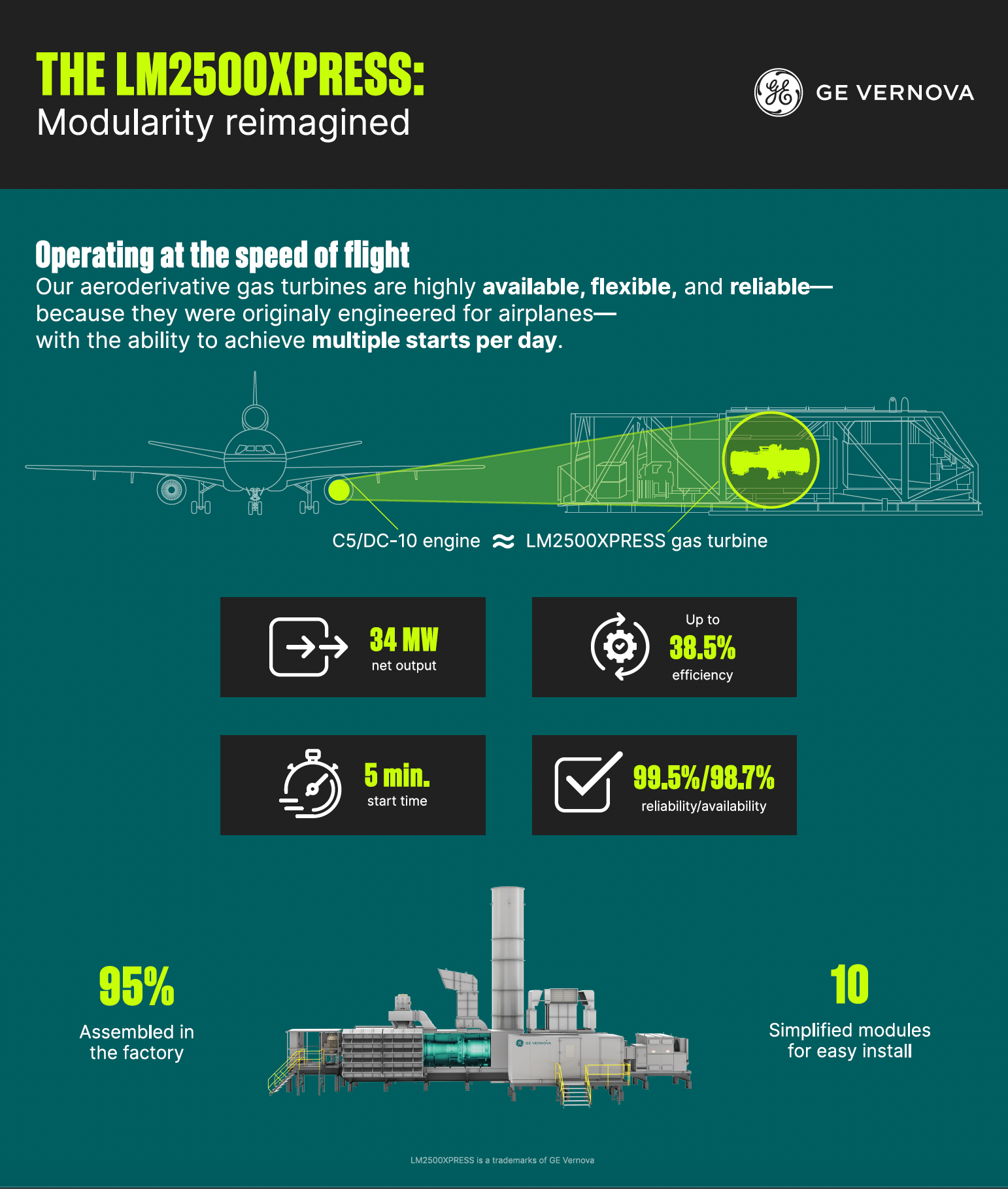Breaking up is hard to do. For communities determined to quickly adopt wind and solar, however, wriggling free from old coal-power providers is often the first step. That’s exactly what’s happened recently in Colorado, as the Federal Energy Regulatory Commission (FERC) last year granted electricity cooperative United Power’s wish to separate from Tri-State, a legacy generator. United Power serves fast-growing towns in the north Denver metro region, and it needs a light-footprint array of small natural gas turbines to support renewables. For help, it turned to Kindle Energy and GE Vernova, who put together a project co-development to purchase six of GE Vernova’s advanced LM2500XPRESS power plants — built on the company’s proven LM2500 aeroderivative gas turbine technology — for United Power’s Mountain Peak Power plant.
“That’s the Kindle model. They call it public power, and have worked out similar projects with other co-ops,” says Michael McCarrick, power generation development manager at GE Vernova’s Gas Power business. “These small co-ops simply don’t have the internal resources to build their own power plants.”
Colorado is one of America’s hottest domains for renewable energy. Denver gets nearly as many sunshine hours per year as Los Angeles, and the mountains along the Front Range typically unleash powerful winds. According to the Renewables Rise Dashboard, the Rocky Mountain State has seen wind, solar, and geothermal bolt from 14% of electricity sales in 2013 to 36% in 2022. United Power serves counties like Weld and Boulder, communities that have built rooftop solar like crazy, and the state has generous incentives not just for electric vehicles but for e-bikes too. That means a lot of demand growth for electricity. According to the FERC, the need for power throughout the U.S. is set to break out from a long base and start rising quickly in the years ahead.

The LM2500XPRESS units that Kindle and GE Vernova will provide to United Power are already popular around the world, especially in domains with high penetration of renewables. Last year, for example, Germany chose 11 of these units to construct a fast-acting power plant to support the country’s huge base of wind and solar. When organized into a power-plant array, the LM2500s can scale up smoothly, providing just the right amount of power. Although they do burn natural gas, they can almost act like a battery, turning on within minutes to support gaps in the grid and then turning off again just as quickly.
“You need dispatchable, fast-start, peaking power for when the sun goes down or the wind stops blowing,” says McCarrick. “The aeroderivative gas turbine technology is a perfect fit, and the word is definitely out, so we’ve got increasing demand right now, which is rising almost faster than we can build the equipment.”
This is just the beginning, however. According to McCarrick, many more co-ops are looking to separate from legacy generators so they can determine their future generation. GE Vernova and Kindle have worked together previously, for example on the Magnolia project in Louisiana, which will serve a large portion of the state’s rural population through co-ops. And it looks like Kindle and GE Vernova will be doing more work in Colorado. “We’re already talking to a number of co-ops ,” McCarrick says. “We’re lining up the equipment, working with Kindle, and looking at ways to help co-ops in Colorado and other states to best navigate the energy transition.”
